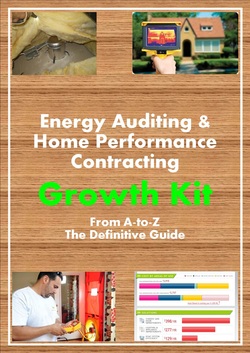Passing the BPI Exam With Energy Auditor Training
FREE BPI PRACTICE EXAMPUT YOUR HOME PERFORMANCE BUSINESS ON ROCKET FUELENERGY AUDITOR NEWSLETTERGet the only Energy Auditor Marketing Newsletter with monthly strategies and tactics to grow your home performance business.
|
BPI Written Exam - Section 2 Buildings and Their Systems
Unlike loose fill cellulose, high density cellulose reduces the air leakage of the cavities it is applied to. Notice I said reduces, and did not say that it is considered an air barrier. There is an important distinction here that many sales staff neglect to recognize. Yes, air leakage is reduced when dense pack is installed but measurements and studies show that it does not reduce leakage enough to qualify as an air barrier. Dense pack cellulose does not eliminate the need for an air barrier in new construction, in a retrofit situation, it is a great option to get close to an air barrier when tearing down a wall is not feasible. High density cellulose can be applied wet and knocked down to be flush for drywall installation or it can be sprayed in dry. When doing a drill-and-fill, be careful not to blow out the wall by spraying in too much insulation. It is a good idea to set up a practice wall where your crew can get a feel your machine. BPI has a installation manual for dense pack cellulose here you can download and view below.
Your browser does not support viewing this document. Click here to download the document.
Next Section2a. Building Components
2b. Conservation Strategies
2c. Comprehensive Building Assessment Process
2d. Design considerations
| ||||||

